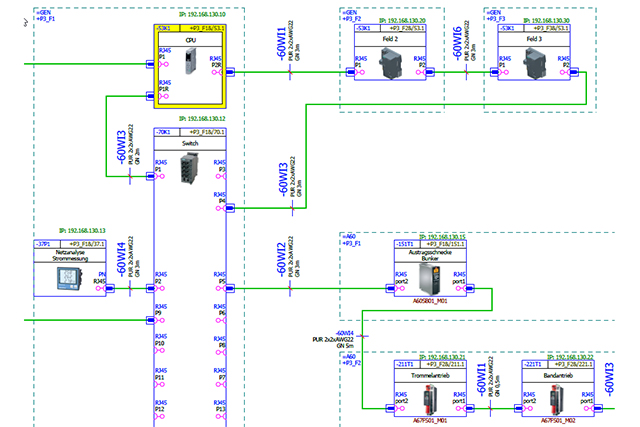Ethernet – The way to Industry 4.0
Deutsch
SPANGLER – the Plus of Industry 4.0.
In automation technology besides serial fieldbuses Ethernet systems for the data communication are used to an increasing degree. Classical fieldbuses opened a huge potential for the industry but withethernet bus in addition there is a base for integration of automatisation in IT, entirely in line with Industry 4.0. Managing Director Christian Brandmüller explains in which direction the standard in this industry sector will develop.
Challenge in process automation
Ethernet bus is applied for solutions for manufacturing and process automation, for applications in the monitoring area and for the whole range of engine control systems. The planning of such plants is regulated by a special guideline, the same as start-up and approval. The implementation of this guideline should be the focus of all efforts.
Metrological examination – Alpha and Omega
During the planning phase besides the network structure also the network load has to be considered. For this it is important to know the correlations between refresh rate, line depth and network structure. At the end of the planning process all the relevant information about plant structure, topology, choice of components and a selection of the transfer medium should be available. For all further considerations it is also of enormous importance to have an extensive knowledge about the plug connection and communication correlations. This knowledge is the base in order to assess the amount of data which has to be transferred.
Especially after the installation of a plant qualification is important as the cabling in the industrial environment is subject to huge loads. Damages or faults are not visible with the naked eye. More and more complex manufacturing sequences linked with electromagnetic and harsh industrial surroundings caused by the weather require a robust communication infrastructure and the transfer of high data rates under difficult conditions.
The acceptance test is divided into four steps:
- Visual inspection during approval of installation
- Acceptance measurement test of the cabling with measurement report
- Start-up of the PROFINET network
- Acceptance of the network
Half of the failures are directly connected to the electromagnetic compatibility (EMC).
In this process problems are more difficult to find as the transfer of data takes place in a substantially higher frequency range. The frequency range of fault and the frequency range of data signals are in similar dimensions. The faults cannot be clearly defined to EMC anymore as they come up in a changed period of time and thus can be easily mixed up with software faults.
Christian Brandmüller further explains: “Correct EMC does not cost more but leads to an increase of value and safety, as well as the partly refinancing of the investment by reduced effort for repair.“
The solution consists of measurement of leakage, shield and error currents as well as the parallel tests of several potential fault.
Scalable use
SPANGLER has realised an increase of flexibility, efficiency, availability and quality, as well as the decrease of production times and costs with a reference project by a proper control of the real time bus. Brandmüller considers the efficient transfer of big amounts of data to be the biggest advantage, simultaneously keeping the real time ability. Furthermore, a corresponding Scope software had a lot of advantageous applications, among them the visualisation of the plant topology in connection with a meaningful plant diagnosis.

